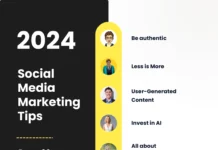
There are about 7000 languages spoken in the world. We all know how language barriers can inhibit the ability to do something as simple as ask for directions. With globalization on the rise, it’s no wonder many companies have to deal with multilingual campaigns to expand their reach. When it comes to global marketing, language barriers create a big stumbling block for companies who wish to break into new markets and provide products and services to those populations. This is where a multilingual marketing strategy comes in handy.
A multilingual marketing strategy means making changes to your business, from website translation to cultural offerings that appeal to the changing marketplace. It is the simultaneous use of different communications channels by translating your content across languages while also retaining the objective of the original message. This strategy helps your business grow through tailoring its strategy according to the needs of people. It not only helps improve productivity but also promotes a more inclusive work culture. Being a company that works across borders, it’s crucial to have a multilingual marketing strategy. But a multilingual marketing strategy is more than just translating your website into different languages. It needs to take into account the differences in cultures too. When you build up a multilingual marketing strategy, you need to make sure that it caters to the demographics of the area in which you are selling products or services.
Now, expanding your linguistic reach is not an easy task. You cannot just translate your content from English to different languages using an online translation. You need to have some basic idea about those languages yourself. Of course, there are plenty of online resources to help you do this, but here is one that I found particularly interesting about how you can get hold of certain tips to learn new languages without much hassle. Some of these include:
∙ Keep in mind why you are learning the language
∙ Figure out a learning strategy you’re comfortable with
∙ Organize the exercises
∙ Practice regularly
∙ Try listening to the language through audio books, online videos or movies
∙ Create a safe space for learners alike and communicate with them
∙ Set your goals and reward yourself frequently
∙ Find out ways to keep yourself motivated and engaged
∙ Have fun while learning
The change in consumer habits brings about new opportunities. A multilingual marketing strategy is becoming more common, especially for larger businesses that serve different regions or countries. It is more than merely translating or transcribing your messages into multiple languages or dialects–it is making sure the messages are on-brand and aligned with the same voice strategy to give you an effective tool for meeting new demands on your company.
Using an effective multilingual marketing strategy can close the gap between your business and customers. It can help you take advantage of the increase in online spending, drive your brand awareness among potential customers, attract customers to your website, and improve customer service through multilingual communications.
Even though digital commerce has been able to blur the borders for trades and bridge the difference in time zones, language remains a barrier still. If you want to skyrocket your sales without losing them despite the economic downturn in the backdrop of the global pandemic, you might need to adapt to a multilingual marketing strategy.
English is not the only online language and people feel more comfortable speaking in their native language
If you’re interested in building your business internationally, it’s vital to understand how language influences the buying process for products and services. After all, if you don’t speak the native language, you can’t hope to communicate effectively with prospective customers. Discussing what a multilingual marketing strategy is has become increasingly relevant in today’s highly globalized business climate. Despite English being an international language, it isn’t spoken or understood by every person in every corner of the world. There are plenty of nations that prefer standing their ground when it comes to language, and they choose to communicate only in their native tongue instead of any foreign language. Even if some people are bilingual and might understand English, they still feel more comfortable interacting in their native language instead of English. Valuing this comfort zone of different people and catering to their linguistic needs is really important for a business in order for it to flourish globally.
Translated content establishes trust
With a multilingual strategy, you can build trust among people who speak different languages, as well as those who do not. For example, if you have a global presence and your website is available in English, Spanish, French, and German. Each time a person from a different language community searches your website, each page will feature at least their native language.
Additionally, a multilingual website is a great way to reach a global audience and answer potential customers’ questions immediately. Since people from different geographic regions might have different questions this is an extremely important part of establishing trust with your audience.
Building trust with your audience early on is imperative to achieving success. When your target demographic is multilingual, having multiple language versions of your site can be an essential part of your marketing strategy. Apart from helping you get more traffic, it also improves customer satisfaction and brand recognition among other potential benefits. International visitors to your business’s website want to see that you care about them. Make it easy for them to find important information by making that information available in their native language. This lets your online visitors know that you value their custom and makes it possible for them to engage with your business on a more personal level.
Acquire a competitive edge
You would want to do everything in your capability to grab your lead’s attention, and a multilingual marketing strategy is a good way to do it. Research shows that bilingual marketing strategies blow monolingual ones out of the water when it comes to grabbing attention at the very start of a conversation.
Multilingual marketing is a great tool for reaching a diverse, multicultural audience. By translating your online content into multiple languages, you can hook a global customer base that’s interested in learning about your products. The use of multilingual marketing tactics has opened doors for businesses previously blocked by language, ethnicity, and region. With a small investment of time, capital and correct resources you can begin to grow your customer base around the world.
See also: What is an example of influencer marketing?











